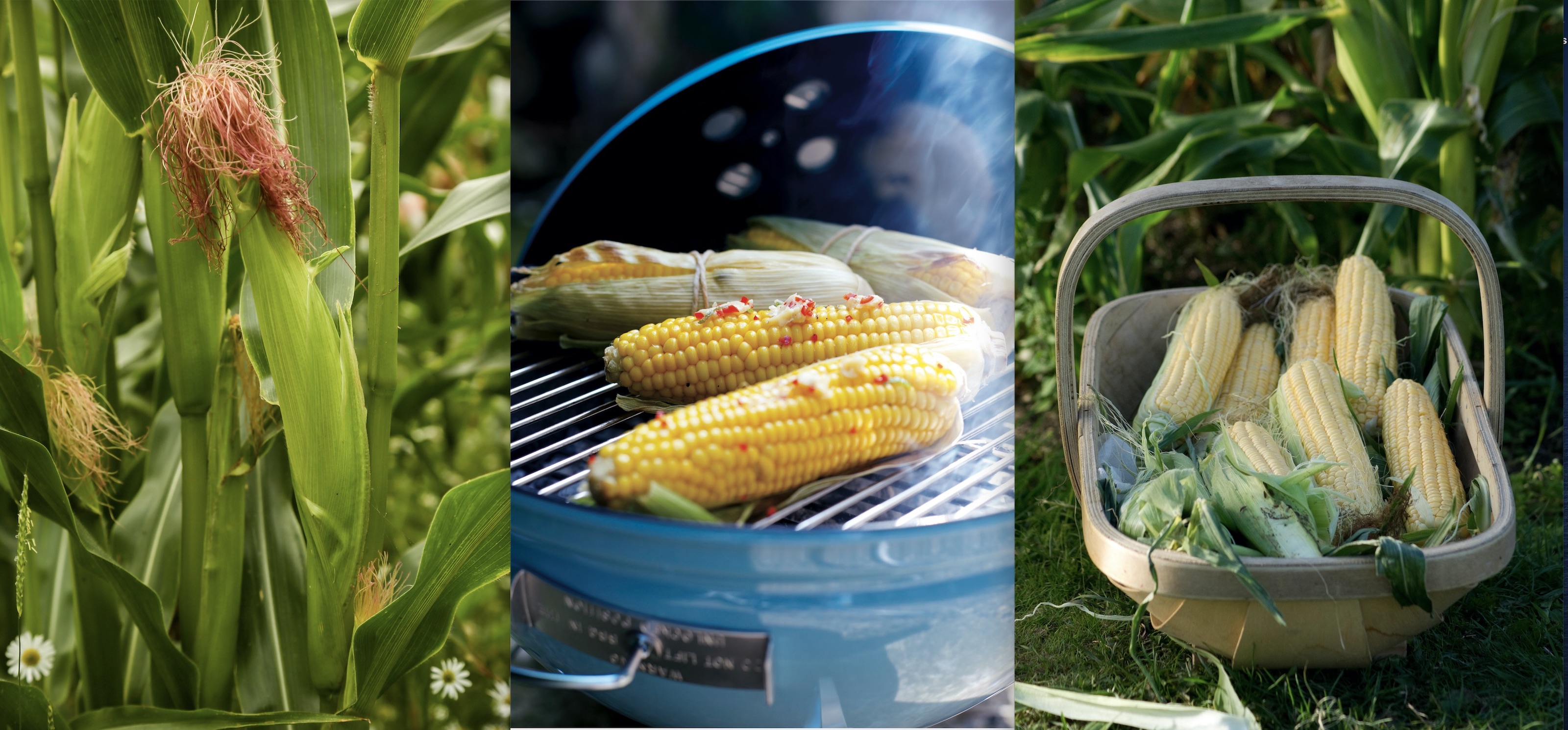How to grow corn – step-by-step
Corn picked fresh from your backyard is sweet, tender and a must for the grill in summertime


Fields of corn are an iconic sight across America’s farmlands. Want to grow corn? Don’t feel that it’s only professional growers who can reap a harvest of this classic crop. While corn will take up a substantial area of your homestead plot, its popularity and flavor more than earn its place.
You don't need a ton of space to plant corn, either; even just a few plants can look wonderful and give you a juicy crop.
How to grow corn
Sweet and juicy corn needs a sheltered and sunny spot to reach its full potential. It also requires rich soil (or to be fed regularly with nitrogen-rich fertilizer), and it doesn’t don’t do well in dry or heavy ground. But given the right conditions, corn is a valuable addition alongside other vegetables in your kitchen garden, such as onions and broccoli. We asked the experts for their tips on how to grow corn.
Choose your corn variety
The sweetness of the cob and the hardiness of the plant are important when it comes to choosing what type of corn to grow in your own backyard.
The sugar in traditional corn varieties begins to turn to starch as soon as it is picked, meaning you have to eat it fresh to get that sweet flavor. If it’s the sweetness you love, then pick a super-sweet variety – listed as 'sh2' in seed catalogs. If classic corn is your choice, then look for the marking ‘su’ next to the seeds. These also have the advantage of being more vigorous than the newer cultivars.
The length and relative temperature of the growing season in your region is also a consideration. Corn grows best during long, hot summers – you can buy early, midseason and late cultivars to maximize your growing season.
‘If you live in northern or colder parts of the country, choose extra-early ripening varieties,’ advises Ed Bollom, Head Gardener at Gordon Castle in Scotland, which offers online fruit and vegetable growing courses. ‘But you can learn to grow large, delicious cobs in almost any part of the country.’
Design expertise in your inbox – from inspiring decorating ideas and beautiful celebrity homes to practical gardening advice and shopping round-ups.
Sowing corn inside

Knowing when to plant corn is all about keeping an eye on the weather. Corn is a tender crop and susceptible to frost, so either wait until all risk of a cold snap has passed, or start your seed off inside from mid April through May.
‘Be patient and don’t sow your seeds too early,’ recommends Ed Bollom. ‘At Gordon Castle we start our sweetcorn in a greenhouse during May, but a warm sunny windowsill will do just as well.
Kate Turner, horticulturalist and ‘gardening guru’ at Miracle-Gro and Love the Garden, advises planting the corn seeds, or kernels, individually. ‘Sow seeds indoors from April to May ideally in modules – also known as seedling planter trays - in good quality compost. I would recommend sowing each seed separately as they hate root disturbance,’ she says. ‘Place on a warm, bright windowsill or propagator to germinate.’
If you don’t have modules, you can plant the kernels in pots instead.
‘Pop two seeds into a 3.5 inch pot of multipurpose compost, sowing them about 0.5 inch deep,’ says Ed. ’They normally germinate after about 10 days, at which point carefully pull out the weaker of the two seedlings if they have both germinated.
‘Let them grow on for a couple of weeks until they are about 8 inches high and their roots are starting to poke out from the bottom of the pots.
Once it is warm enough to plant outside, start hardening off the plants before transferring to your vegetable patch outside. ’This means gradually acclimatising them to the outdoors, so you take them out in the day (but not in scorching sun), then bring them back in at night. Do this for about a week,’ says Kate.
Sowing corn outside

Corn seeds can be sown directly into the ground from April through June. Or transplant your seedlings into the ground once they have been hardened off. Make sure the soil is fertile, weed and stone free, and in a warm, bright position.
‘Choose a sunny spot, sheltered from any strong winds,’ says Lucie Bradley of garden product company, Two Wests. ‘Most soil is perfect for sweetcorn; just ensure it drains well and retains lots of important moisture.
‘Before sowing your seeds, introduce lots of nutrients and organic matter, ideally from a well-made compost, followed by a good helping of plant food.
Corn is wind pollinated, so planting your crop in squares, rather than in rows, will increase the chances of your cob developing.
‘Corn needs to be planted in a grid layout so that the pollen from the male “tassels” at the top of the plants can pollinate the “silks” lower down on the plants nearby,’ explains Ed Bollom. ‘You will need at least three or four rows with 14-15 inches between plants and rows. They are shallow rooted and can be top heavy so be sure to firm the soil well when planting.’
Caring for corn

The secret to growing good cobs is to keep your plants well watered as they mature. ‘If the weather is dry, give your soil a regular helping of water, particularly when you are establishing your plant,’ says Lucie Bradley. ‘Cover all roots with soil and pile it up to protect the plant from strong winds and harsh weather.
For some extra TLC, it’s important to fertilize corn. ‘Add a feed such as Miracle-Gro Performance Organics Fruit & Veg Granular Food to the ground when planting, then once they start to produce cobs you can give them a weekly liquid feed with something like organic Tomorite,’ suggests Kate Turner. Slugs and snails can feast on the new seedlings, while mice love to eat the kernels – so keep an eye on your crop.
Lucie also has another tip for how to grow corn that is guaranteed to give you a good crop. ‘Give the male plants a good tap to help with pollination,’ she says. ‘You can do this when the tassels open.
Harvesting corn

When to harvest corn? Your corn should be ready to harvest around eight weeks after planting, when the tassels at the end of the cob have started to dry out and turn brown. Pull back the leaves and do the fingernail test…
‘You can tell if the cobs are ripe by pressing your fingernail into one of the corns,’ says Ed Bollom.’If the liquid that runs out is cloudy, they are ready to eat.’ If the liquid is translucent, the corn is not yet ready to eat.
‘Always twist the cob off the stem,’ says Kate Turner. ‘And don’t harvest before you need them as the sugars turn to starch really quickly so you will lose their sweetness. If you need to store them blanch the whole cob in boiling water for 4 minutes, drain well and then freeze in plastic.
Is corn easy to grow?
Corn needs space to thrive and isn’t suitable for container growing, but it is straightforward to grow. The plants need a sunny, sheltered position, as their height makes them vulnerable to winds. They are also a tender crop and shouldn’t be planted out when there is risk of frost.
How long does it take to grow corn?
Corn is a quick-growing and productive crop. Plant kernels from April through June and you can expect to harvest cobs eight weeks later, from July through October.
Andrea has been immersed in the world of homes, interiors and lifestyle since her first job in journalism, on Ideal Home. She went from women's magazine Options to Frank. From there it was on to the launch of Red magazine, where she stayed for 10 years and became Assistant Editor. She then shifted into freelancing, and spent 14 years writing for everyone from The Telegraph to The Sunday Times, Livingetc, Stylist and Woman & Home. She was then offered the job as Editor on Country Homes & Interiors, and now combines that role with writing for sister title homesandgardens.com.
